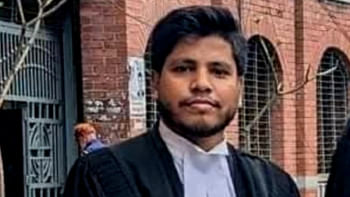Tayeba Begum Lipi’s artworks on display in New York


Renowned Bangladeshi artist Tayeba Begum Lipi’s artworks are now on display at the famous art gallery Sundaram Tagore Chelsea in New York, USA. The exhibition, titled “This is what i look(ed) like”, was inaugurated on May 2. Organised by Sundaram Tagore Chelsea, New York, the solo show presents sculpture, photography and video installations that explore issues of female identity in contemporary life by the artist.
“Sundram has been representing me over the last 5 years and showcasing my artworks all over including a collateral show at the Venice Biennale 2015 and my solo show at ST gallery NYC in 2016,” said Tayeba Begum Lipi.
Although Lipi’s practice has always been rooted in themes of female marginality and the female body, the work in this show offers more of an autobiographical perspective, as the artist considers transitions in her own life as a source of inspiration. “The series of work I’m doing these days are related to the memory line,” said the artist. “I am completing one chapter of my life and moving to a new chapter and aging is one part of that.”
Based in Dhaka, Lipi’s multidisciplinary practice includes painting, prints, videos and installations, but she is perhaps best known for her sculptural works that re-create everyday objects, including irons, bathtubs, strollers, handbags, and sewing machines, all made from safety pins or stainless steel razor blades. Her provocative choice of material speaks to the violence facing women in Bangladesh and to her experiences growing up as the eleventh of twelve children, where she was often present for the home births of nieces and nephews delivered with the help of a local village woman and the most readily available tool: a razor blade.
For this exhibition, Lipi is showing recent razor blade sculptures, including a selection of women’s wardrobe accessories, ranging from shoes to undergarments. With this body of work Lipi explores the commodification of art, but here she takes the idea further by addressing the paradox of subversive art created by women that speaks directly to issues of female identity, yet is ultimately absorbed into the patriarchal structure of the art world.
These works are wryly presented in a “boutique” setting, complete with hangers, garment rack and display stands, transforming the gallery space into a literal shop, where the artist invites viewers to browse the work in a conventional retail environment.
Also on view is an installation that was shown at the Shanghai Modern Art Museum last year. Story of A Girl captures the brevity of life in ten images. In a series of staged photographs of Lipi, taken by French artist Awena Cozzanet in 2003, one can see her through the various stages of life, from the carefree days of youth to the unknowns of marriage and eventually death. The images are presented in altar-like wooden frames designed by the artist and fabricated by local carpenters.

Of her sculpture The Mirror, one of her razor blade works in which two female figures face each other, Lipi says: “When I see things through my heart, when I have a conversation with another woman or when I listen to someone’s stories, I sometimes find the reflection of my own mind in that mind. We are as different as we live our lives, but we always find some similar issues or stories that are never spoken out ever.”
This sentiment succinctly captures the true nature of Lipi’s art. Since first appearing on the global stage in 2011 as the commissioner for the first Bangladeshi pavilion at the 54th Venice Biennale, Lipi has often been referred to as a feminist artist who creates politically charged work addressing societal contradictions. But the work in this show beautifully expresses the driving force of her practice, which is to create a space for constructive conversation, to reveal truths and discover common ground.
Sadia Faizunnesa, the Bangladesh Consul General in New York, attended the exhibition on May 14. She hoped that the exhibition will augment the image of Bangladesh in the USA through the art initiative.
Various US high officials, consul general of different countries, UN officials, journalists, Bangladeshi Americans, renowned artists from Bangladesh, cultural personalities and members of civil society were present on the occasion. The exhibition will run until June 1 at the gallery.
In 2003, Lipi was awarded a Grand Prize at the 11th Asian Art Biennale Bangladesh. Together with her husband, artist Mahbubur Rahman, she founded the Britto Arts Trust in 2002, an organisation dedicated to creating opportunities for other Bangladeshi artists through exhibitions, seminars, residencies and workshops.


 For all latest news, follow The Daily Star's Google News channel.
For all latest news, follow The Daily Star's Google News channel. 



Comments